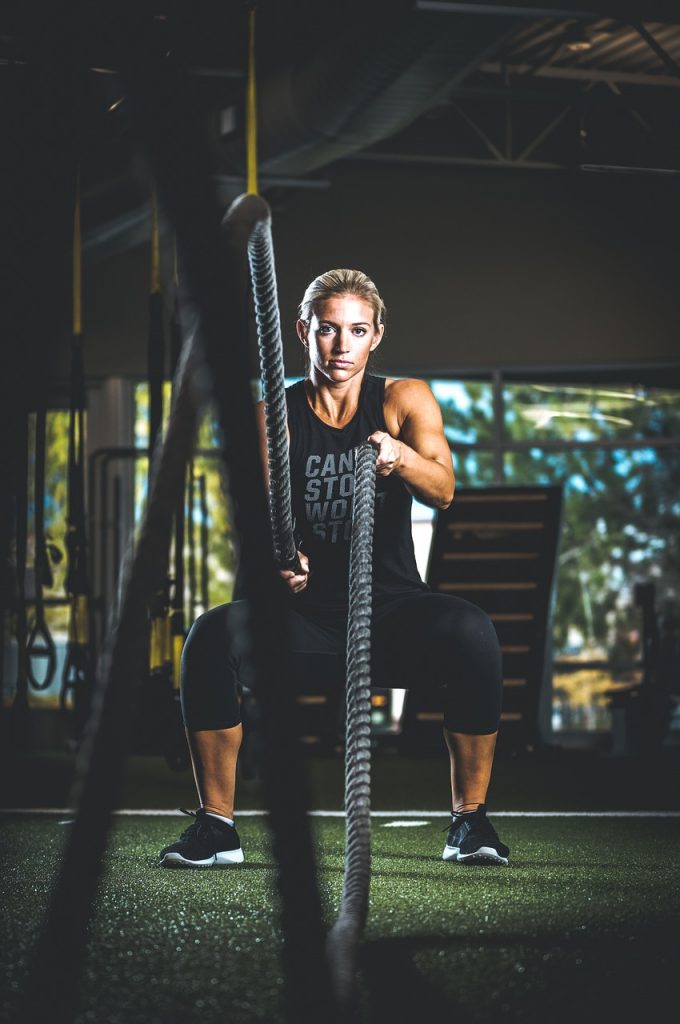Home-based workouts are a divisive topic in the fitness world; though a seemingly innocuous idea, home-based workouts and their efficacy are no less prone to create clashes than keto, long-distance running, soy, or dairy.
Regardless of your opinion on this topic, home-based workouts are our primary source of self-betterment in this world of closed gyms, social distancing, and general fitness equipment scarcity.
If you have a well-equipped home-gym, you’re already ahead of the curve. For the rest of us, home workouts can be a grueling mismatch between our pursuit of better fitness and a setting where we’re usually watching tv or folding our laundry. But home workouts can have their advantages if utilized intelligently. Sadly, the home workouts of many are a cluster of poorly programmed bodyweight exercises with substandard execution, zero effort to form long-term progression or periodization, and worst of all–a complete rejection of known kinesiologic principles when implementing these half-assed workouts.
With all this in mind, here are some strategies for taking your home-based workout to the next level.
5. Work on Anaerobic Threshold

Running tends to become a mainstay during home workouts as the cardiovascular training tool of choice. But these runs are often slowly paced, with a mild, consistent heart rate. Though long-duration running may have its place in fitness, particularly as a marker of aerobic health, it is not the end-all be-all of cardiovascular / energy system training.
Be sure to add in shorter duration exercise protocols like this workout we’ve detailed for the site: An Anaerobic Conditioning Set with Aerobic Benefits. Though this describes a set we do with the Concept 2 Rower, this is something that can be easily adapted to any conditioning modality like stationary bike, sprints, hill sprints, etc.
These shorter duration conditioning bouts are so crucial because the anaerobic threshold, or the point at which anaerobic energy systems are preferentially recruited becomes rapidly lost.
A high anaerobic threshold is a fantastic marker for athletic success, regardless of an athlete’s domain of competition. So striving to make improvements on this number up is a good way to keep your overall athleticism high.
Besides the aforementioned set, any exercise where you’re looking at maintaining a high work capacity at a very challenging pace is a good place to start. Rather than getting bogged down in specific metrics here. The large point is to make sure that you are pushing yourself across the various levels of energy input.
4. Set Goals for Weekly & Daily Totals
When taken out of the traditional gym / strength training model, athletes may continue on the same trajectory, with the same concepts of what makes a workout successful. Though this continuation of training over time is beneficial, there are now tools at your disposal that are otherwise rate-limited by the logistics of gym life.
Weekly and Daily Totals are something of a staple in Ruthless Performance training programs. Weekly totals ensure that important exercises are performed with enough frequency to reach a total throughout the week. Prescribing crucial exercises across the week ensures that it never gets too far out of mind. I regularly prescribe banded frog thrusts, pull aparts, timed isometric hamstring curls, and other exercises to be accomplished throughout the week.
Daily totals are another way to progress an exercise. While stuck at home, I’ve been performing 100x pull-ups daily. This style of workout ensures that there is perpetually some stimuli for the body to overcome. For my 100x Daily Pull-Ups, I’ve primarily been doing sets of 5 reps, with the most back-to-back sets being 3 at a time.
This is well under my pull-up rep max, but the microtrauma being incurred at the cellular level ensures that I’m preferentially building muscle than gaining fat.
To start with a daily total, first select an exercise that will help from either a postural standpoint or will help add muscle to a needed area. Then estimate the total number of reps you could do on this exercise until failure, then multiply by 4-8 to get your daily total. As this gets easier, consider progressing yourself to a harder exercise rather than continually adding reps (like moving from pull-ups to pull-ups with a fat grip).
3. Direct Glute Work
If you’re not sure where to add additional glute work into your program, consider the aforementioned weekly total sets. Trying to hit a weekly total of 100x side-lying clams / side, 250x banded frog thrusts, 100x unilateral glute bridges / side, or similar exercises will help your long-term athletic career.
Direct glute training, even for high reps as detailed here, improves strength and control over the hips and lower extremities; a quality well-worth developing–and with enough downtime–glute training should be taking center stage.
Hip extension, one of the primary actions of the glutes, is at the core of most athletic movements. This includes olympic weight lifting, sprinting, swimming starts, coming off of the line, and much more. Bigger glutes tend work in your favor by having a better angle of attachment in the hip. This better angle alone is enough to improve the strength and power output of an athlete. Consider standing perpendicular to a door, by pressing into it at this angle it will open up much easier than pushing at an angle towards the hinge. The same force, compounded by a preferential force multiplier makes for a stronger action.
Train the damn glutes.
2. Push-Ups and Pull-Ups Do Not Create Balance
If you’ve been following my writing for any length of time, you may have read about the problems underlying the myth of the push-up / pull-up balance. The Lats and the Pecs both create internal rotation and aren’t antagonistic. For long-term posture and shoulder integrity, a large volume of trapezius and deltoid training needs to be perpetually utilized.
The Lats and the Pecs both create internal rotation and aren't antagonistic. For long-term posture and shoulder integrity, a large volume of trapezius and deltoid training needs to be perpetually utilized. Click To TweetIf you are fortunate to have a suspension trainer at your house, you can perform inverted (ring) rows or bodyweight ‘Y’ raises. Without a suspension trainer, you could use a towel, heavy rope, or find other creative ways to perform rows with your back to the ground. If your home workout series is bodyweight-based, there’s a chance you’re missing out on other crucial overhead exercises that build strength in the back and stability in the shoulder. Half Kneeling Presses against bands can work in your favor. Overhead plate raises can work, as can pike toe touches, or handstand work if you’re advanced.
Get creative, but strive to do it overhead.
1. Maintain Mobility
When you have the opportunity to get back to a gym, your mind and your body might have different plans. If you’ve been using this time to keep up on mobility work, you’ll likely be granted a more expedient return to some of the numbers you were using before being stuck at home. Mobility work takes little to no equipment, besides some space in which to complete it.
Focus on maintaining mobility through the thoracic spine and through a complete range of motion at the hips. Ensure that the Rectus Femoris is adequately stretched through an active Half-Kneeling Stretch. Use whatever time you have at your disposal to stretch both the pecs and the lats by performing dead-hangs. If you’re like me and don’t have a pull-up bar at your house, you can try to improvise like I did with an overhanging staircase that leads to my garage.
If you’re not strong enough to use a dead hang stretch, replicate the same exercise but with your feet still in contact with the ground, or perform both pec and lat stretches on a daily basis. Our champion complex is also a fantastic exercise series to ensure that your spine is staying somewhat mobile.
The Wrap-Up
Home workouts can be terrible, specifically if you’re spoiled with specialized gym equipment and thousand-dollar barbells. Use this time to reflect on how good you’ve had it with your normal gym training and use that energy and introspection to fuel your pursuit of success.

